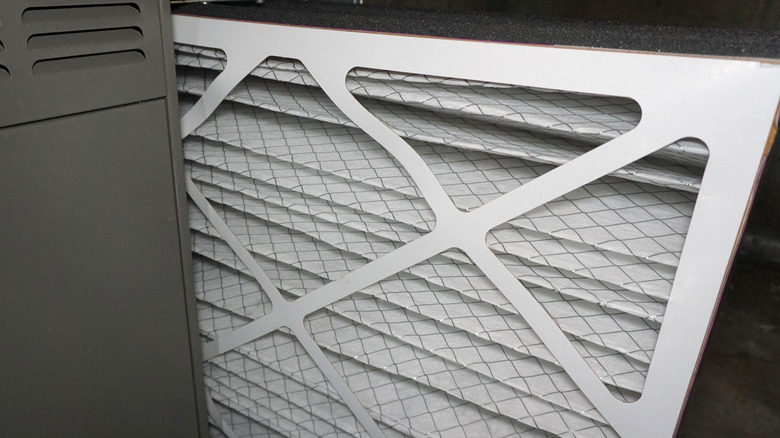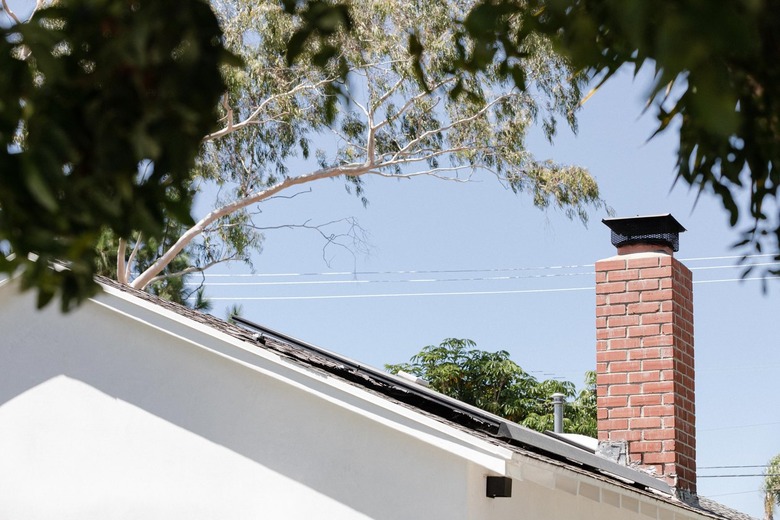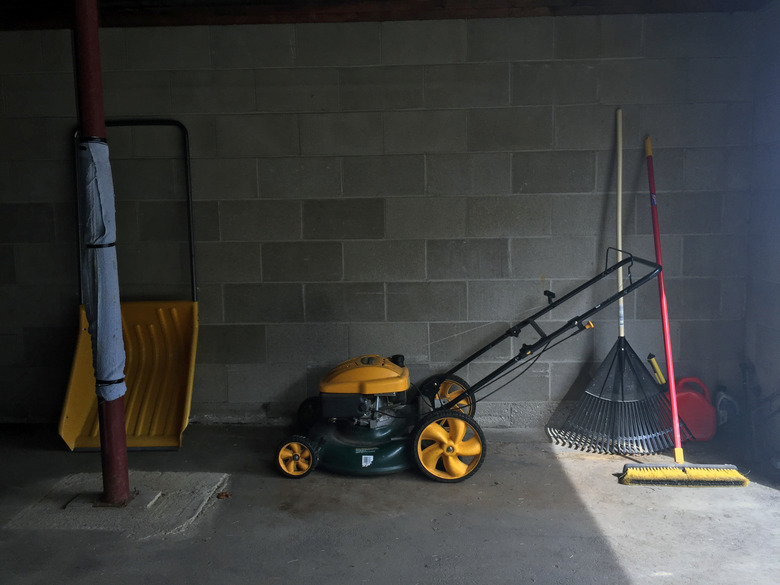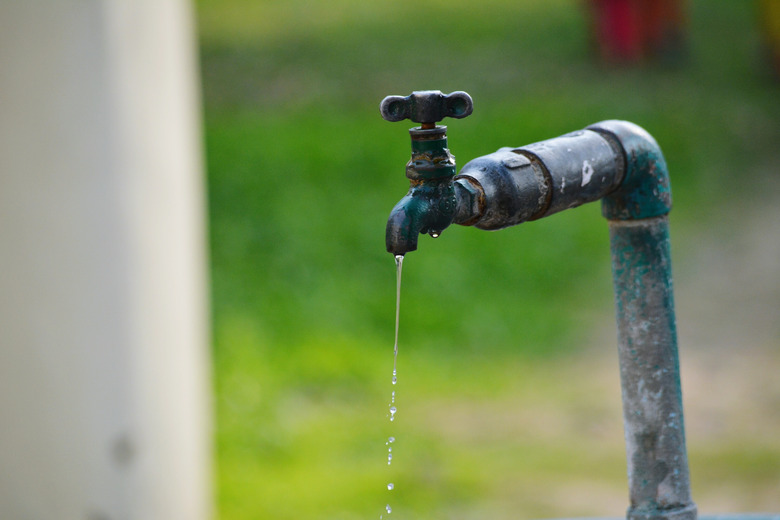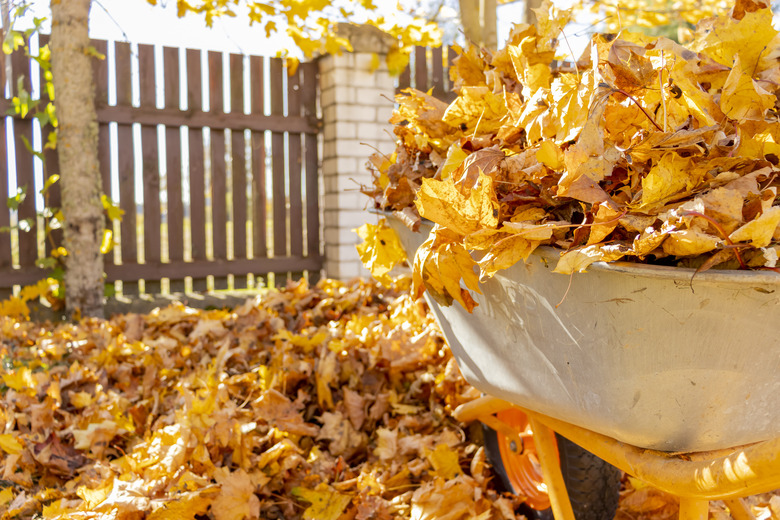7 Fall Maintenance Jobs We Hate — And Why We Should Do Them Anyway
We may receive a commission on purchases made from links.
When was the last time you devoted one of the precious few days of just-right fall weather to cleaning your gutters, aerating the lawn, and replacing the furnace filter? Most of us don't even take the time to put our garden hoses away before they're completely rigid after the first hard freeze (and they usually end up stuck to the back patio until spring).
Okay, so winter caught you by surprise (again!) last year, but this year you're going to get a jump on it, right? For perhaps the first time in your life, the answer to this question is yes. This year, you're actually going to prepare your home for winter (and next spring) because you're going to follow this guide that gives you the handful of tasks you really need to do — and why you need to do them.
Other, more aspirational fall maintenance checklists typically have upwards of 20 items on them, but we've narrowed it down to the essentials. Here are the fall maintenance items you really don't want to do but you really have to.
1. Change the Furnace Filter
1. Change the Furnace Filter
We'll start with an easy one. It is officially recommended that you have your furnace inspected and serviced by an HVAC technician before each heating season. If that's not going to happen (let's face it — it's not), you should at least change your furnace filter. A new filter costs about $8, and swapping it out takes less than five minutes. It's important to do because your entire HVAC system breathes through this filter. How would you like it to spend all winter breathing through a dusty, dander-clogged sweater? Don't make your furnace do it, either.
2. Aerate and Fertilize the Lawn
2. Aerate and Fertilize the Lawn
Did you know you can aerate your lawn with a pair of special hole-making shoes? You can also climb Mt. Everest in roller skates, but don't worry, we're not suggesting that you do either. In fact, aerating is one of those fall maintenance tasks that you should definitely hire out rather than DIY. A local lawn or landscape pro will probably charge you less than $50, which is about what it costs to rent a power aerator. Even the shoes can cost $20 to $50 to buy, not to mention the band-aids for the blisters and the two weeks of your life you can't get back.
Aerating is one of the best things you can do for your lawn because it counteracts compaction, allowing water and air to penetrate the soil. This promotes natural soil health — and healthy soil makes good grass. Chemical fertilizers don't do this very well, no matter how much you put down (they're basically the lawn-care equivalent of a facelift). That said, once you've aerated, it's the perfect time to apply an organic fertilizer formulated for your climate and the fall season. Fertilizer feeds the soil, not the grass, and aerating makes millions of holes for the fertilizer to fall into and feed the soil more deeply than with a surface application.
3. Clean the Gutters
3. Clean the Gutters
"Clean your gutters!" may be the homeowner equivalent of every parent's "Eat your vegetables!" Now that you're an adult, you know you can skip vegetables any time you please. But there's a very good reason to clean your gutters in the fall. Dirty gutters don't drain well, so they hold onto water. When it's cold, that water freezes, potentially leading to ice dams. When they get bad enough, ice dams work their way up and under your roof shingles, where the ice can melt (due to heat from your house), causing roof leaks. So there you have it: failing to clean your gutters can lead to water damage inside your house.
4. Get Your Chimney Cleaned or Inspected
4. Get Your Chimney Cleaned or Inspected
If you have a wood-burning fireplace or woodstove, get your chimney cleaned and inspected by a local chimney sweep every fall. Why? Because a dirty chimney — coated with flammable creosote — can burn your house down if left unchecked. You should tackle this in the fall because the cleaning process, in addition to getting rid of all that dangerous creosote, will ensure the chimney is clear of bird nests or other critters and clogs before you start using the fireplace for the season.
If you have a gas fireplace, you probably don't need to have the chimney cleaned, but you do need to inspect it to make sure the passage is clear so it properly ventilates the fireplace. This is actually more important with a gas fireplace because a clogged chimney can lead to deadly carbon monoxide (CO) buildup in the house, and with gas, there's no smoke to alert you to the clog.
Warning
Houses with any kind of fireplace need a CO detector to monitor the indoor air quality for safety.
5. Service and Stow the Lawnmower
5. Service and Stow the Lawnmower
This fall maintenance task is particularly crucial for those who haven't yet switched to a battery-powered electric mower. A quick DIY servicing takes about 15 minutes:
- Run the mower until the engine stops, then pull off the spark plug boot (for safety).
- Drain the oil.
- Remove and clean the air filter (if necessary, replace it).
- Brush off the mower and clean the underside of the deck.
- Add new oil.
- Store the mower in a dry place.
If you store your mower with old gas in it, additives in the gas will gunk up the carburetor, and the mower probably won't start come spring. And if you'd rather not hassle with gas, oil, and seasonal maintenance, switch to an electric mower, which needs nothing more than a quick cleaning before being stored for winter.
Tip
Always add fuel stabilizer to the gas can every time you get new gas for your mower. Stabilizer is good for the mower's engine, and it prevents the gas from going bad in storage, which can take as little as one month.
6. Winterize the Outdoor Faucets
6. Winterize the Outdoor Faucets
Even easier than replacing the furnace filter, this fall maintenance must-do takes about 5 to 10 minutes and can prevent a flooded house. The first step is disconnecting your garden hoses from the faucets. If you're feeling especially motivated, you can drain the hoses, roll them up, and store them for winter (this is actually easier than buying new hoses to replace the ones you neglected).
The second step depends on the type of faucets you have. If they are freeze-proof faucets — the kind that drain a little after you shut off the water — you're done. That bit of drainage empties the last section of pipe before the faucet, so there's no water inside to freeze.
If you have old-fashioned non-freeze-proof faucets, you have to shut off the water inside.
- Grab a pair of pliers and a bucket, and head into the basement or crawlspace.
- Examine the water pipe leading to each faucet. There should be a shutoff valve within a few feet of the outside wall.
- Close this valve by turning the knob clockwise all the way or by rotating the handle lever so it's perpendicular to the pipe — depending on the type you have.
- Find the little metal cap on the valve. This is a bleeder cap that allows you to drain the remaining water in the last section of pipe.
- Loosen the cap with the pliers, then unscrew it by hand and let the water drain into the bucket. When the water stops, thread the cap back on and tighten it snugly with the pliers.
Lots of fall-maintenance-haters (guilty) skip this step and simply cover their old-fashioned faucets with little insulated plastic hats. These covers are never a bad idea — even when you drain your faucet or you have freeze-proof faucets — but they alone cannot reliably prevent freezing in extreme cold. This is because insulation does not add heat; it merely slows the transfer of it. And your poor little metal faucet sticking out into the elements isn't getting much heat to begin with.
7. Deal With the Leaves
7. Deal With the Leaves
Leaves left on your lawn all winter can be either good or bad for the grass, depending on a few factors. Fully intact leaves left to lie where they fell end up forming a thick, damp, moldy mat over the grass that promotes fungal growth and suffocates the grass plants. Not good.
On the other hand, small bits of leaves that you ran over with your mulching lawnmower (which describes pretty much every lawnmower these days) allow air and moisture to reach the grass, and the leafy bits actually fertilize the grass as they decompose over the winter.
However, the mulching option only works in moderation. If you have a lot of leaves, it's better to collect some of them in your lawnmower bag and add them to your compost pile or use them as mulch to cover your garden beds for the winter.
You've probably noticed that raking the leaves has yet to be mentioned. You can certainly take the old-school approach and rake up all the leaves and stuff them into bags for the weekly trash pickup. But this is a lot of work, especially if you don't have children to do it for you. It also unnecessarily burdens landfills, where it takes up space and promotes the production of greenhouse gases. Do the environment and your back a favor and let the lawnmower help with the leaves.
